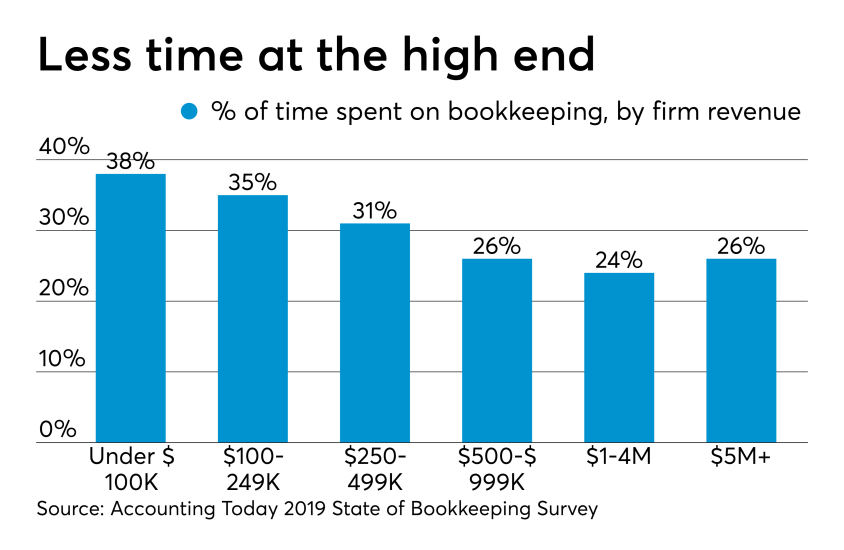Tax season catches the general public’s eye, and the future of auditing is very much a high-profile issue these days, but the third pillar of traditional accounting practices, bookkeeping, is facing its own changes and challenges.
Those changes are being driven by many of the same factors — particularly technology and changing client demands — according to Accounting Today’s first annual “State of Bookkeeping” survey, which reached out to just over 700 accountants in our audience in May. (See the charts below for survey results.)
“The face of bookkeeping is changing,” wrote one respondent. “Software is becoming pretty accurate, and bookkeeping is changing to money management — validating the automated work and advising.”
“Bookkeeping is evolving so much right now,” added another. “Software innovations and new competition coming into the market have made firms like ours have to review their approach and look at alternative ways to provide services and expand our offerings.”
Those offerings are widespread, as bookkeeping is a common service: Out of 709 accountants surveyed by Accounting Today, 74 percent reported offering bookkeeping.
A number of respondents noted that bookkeeping was a good way to fill out their year after tax season, suggesting that for some it was not necessarily a top priority. That might explain the concerns of certain respondents that bookkeeping was seen as a low-value service.
“The term bookkeeping is seen as a ‘low’ position and one that is a commodity,” wrote one. “Therefore, pricing pressure is horrible and we keep it to a minimum for certain clients only.”
“It’s often neglected and looked down upon,” noted one licensed public accountant, “but it can have a major impact on a business or a service provider’s time and budgets.”
A major service
Serving more clients well was the main concern for survey participants, with 63 percent noting “Getting work done efficiently (on time and accurately)” as their top challenge. (See chart below.)
“As technology changes, bookkeeping is becoming more automated and somewhat easier,” noted an Enrolled Agent whose firm offers the service. “Unfortunately, the automated processes can easily lead to mistakes when staff isn’t paying close attention. We then find ourselves having to spend more time analyzing if mistakes were made.”
Still, they added, “Automation beats pencil and paper any day.”
The second-biggest challenge was “Managing client expectations/requirements” (51 percent) — and a number of respondents cited other client-related issues, such as maintaining profitability, and getting clients to understand their value. “Business owners think anyone can be their bookkeeper and then wonder why their year-end invoice from me is so high and why there were so many adjustments and why the financial picture changed,” replied one senior accountant.
There is, of course, a large tier of bookkeepers who are not represented in this survey — those who are not part of accounting firms or part of the accounting profession. While many are skilled and experienced, they often don’t have as much formal accounting education, training and credentials as those who work in the profession and at accounting firms.
That does not mean that they are not strong competition, however, particularly as technology is making it easier and easier to perform the basic tasks of bookkeeping, thus lowering the barriers to entry.
And with 32 percent of AT respondents naming “Finding new clients” as a top challenge, they’ll want to keep a very close eye on any competition that comes along.













